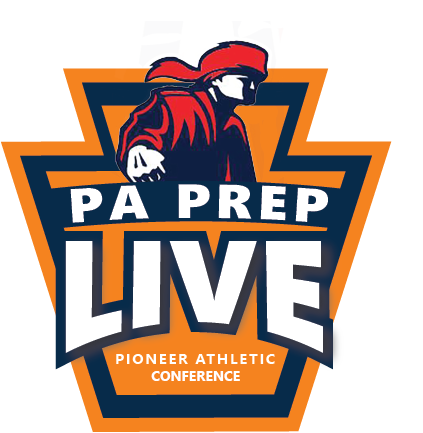
Debate on competitive imbalance gets aired out by PIAA
HARRISBURG >> The PIAA is taking steps to address the competitive imbalance in district and state tournaments. The plan for evening the playing field, though, isn’t what the title of Monday’s hearing indicated.
At the Pennsylvania Athletic Oversight Committee’s meeting on, “Public, Private Sports,” the idea of conducting separate championships was not brought to the table for discussion. Instead, the PIAA is spearheading initiatives it hopes will lessen competitive imbalance by targeting the pressure points with which administrators and legislators are often presented.
“There’s no doubt that concern and criticism over this issue has intensified recently,” said Rep. Gene DiGirolamo, (R-18) of Bensalem, the chairman of the PAOC.
“Of all the issues, it’s one of the ones I hear about the most,” said Sen. Scott Martin (R-13) of Lancaster.
In the short-term, the PIAA has implemented or proposed several measures to root out and deter athletically motivated transfers. But as explained by PIAA Executive Director Dr. Robert Lombardi, a longer-term plan that has passed a first reading by the PIAA’s board would install a system that utilizes not just enrollment but transfers and a success factor to determine classification.
The preliminary sketch received broad support from the hearing’s other two panels — testimony given by Sean McAleer of the Pennsylvania Catholic Conference on behalf of private schools and Mike Bariski for the Pennsylvania Coalition of Charter Schools. It also met little resistance from the six-member PAOC, comprised of legislators from both houses of the General Assembly.
READ: Our four-part series on the Public/Private debate in Pennsylvania
Among the reforms already implemented are updates to the Athletic Transfer Waiver Request Form, where principals are required to sign off to declare that transfers are not athletically motivated. The new form places a greater burden of proof on administrators of the sending school and requires more documentation of residence.
Effective April 1, the PIAA created a 21-day waiting period for in-season transfers and bars immediate eligibility for students who’ve essentially participated in a full season (as defined by at least 50 percent of the maximum allowable contests by PIAA rules) outside the PIAA. That situation occurred with a football player at DiGirolamo’s alma mater Conwell-Egan last football season. The PIAA is pushing for “an eligibility portal” that will eventually become a clearinghouse for transfers statewide and require submission of rosters each season, introducing greater transparency to school change.
At the PIAA’s May board meeting, an amendment to the transfer rule that would ban any transfers after the natural break between eighth and ninth grade from participating in postseason contests at the new school in the first year after the transfer passed on first reading. That provision, if approved on second reading in July along with a suspension of protocol to circumvent a third reading, could be in force by the start of the next academic year.
Those changes, though, are minor compared to the big plan that passed first reading in May and will reshape how the PIAA classifies members. A special competition committee has recommended augmenting the long-standing system of classification by enrollment alone. Instead, classes would count current enrollment figures (by gender for grades 9, 10 and 11 tabulated in each odd-numbered year) plus the number of transfers a program gets and success factors based on placement in district and state tournaments.
The plan is similar to how several states, Indiana in particular, classify schools. It also breathes new life to the discussion of a seventh “super-class” in basketball and football to ensure compliance among larger schools.
“The purpose of classifying schools is to allow for schools to compete within certain parameters against similar-size schools,” Lombardi testified. “This classification process has involved using enrollment numbers to establish a school’s classification that has stood the test of time for decades. However, there is a general view that enrollment numbers may not clearly indicate equal competition factors and there should be additional items that are needed to be considered in the classification process to keep athletic competition in balance.”
Lombardi said the plan has been circulated to athletic directors, principals and superintendents statewide for feedback. The competition committee will meet two more times before the July board meeting, and DiGirolamo expressed interest in a second PAOC meeting this summer. That level of involvement is unusual for the PAOC, which last met in 2017 and at times has deemed convening unnecessary.
One issue that came up twice in the hearing, broached by both Sen. Jay Costa (D-43) of Pittsburgh, and Sen. Scott Martin (R-13) of Lancaster, was the application of any new rule evenly across membership. Past efforts to combat private schools’ monopolization of PIAA titles focused on rules that would treat private schools differently, such as different postseason tournaments. Both Costa and Martin asked and appeared reassured by answers that new guidance would apply evenly, and Costa pushed back against McAleer, saying he was “troubled by the discriminatory rhetoric” that McAleer expressed as being directed toward private schools as the minority in PIAA membership.
Martin, a state champion wrestler and standout football player at Lancaster Catholic, called the new classifications “something that everyone can rally around.”
Indeed, both McAleer and Bariski, staunch defenders of their constituencies, acknowledged common ground. McAleer expressed PCC support for the transfer portal, the implemented transfer guidelines on the 21-day waiting period and 50 percent provision, and the competition formula. Bariski, the basketball coach at state champ Lincoln Park Performing Arts Charter in Midland, pointed out that his team voluntarily plays up to Class 3A but wants to ensure that charters in other situations aren’t uniformly required to do so.

